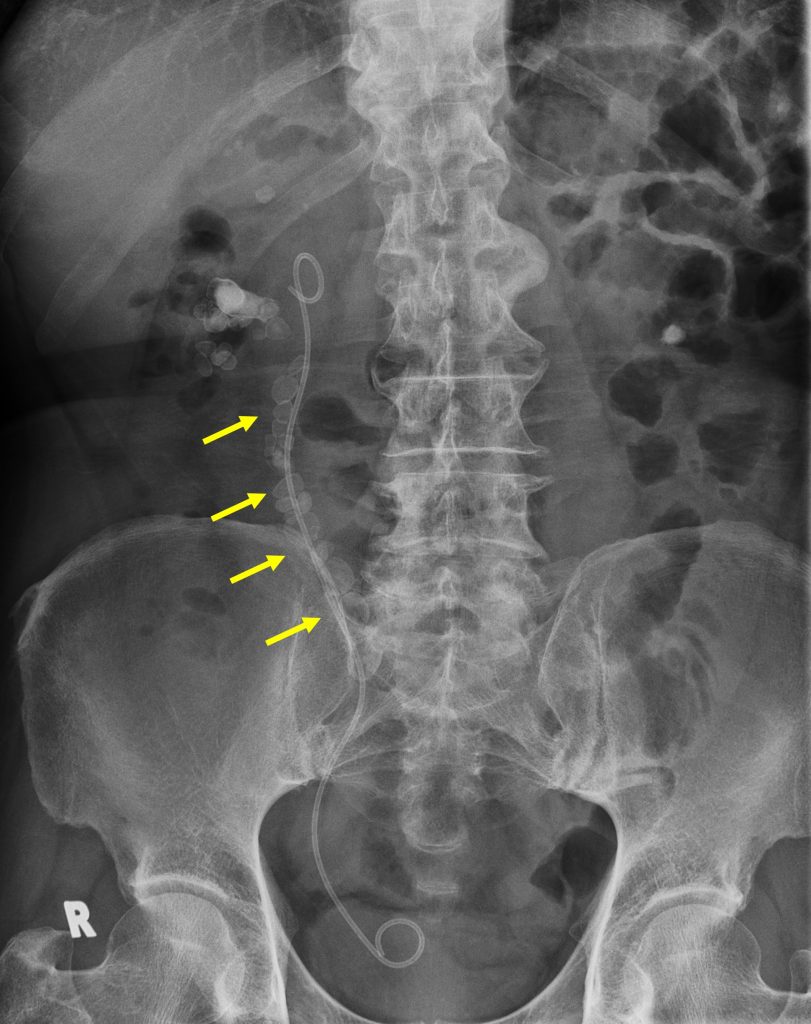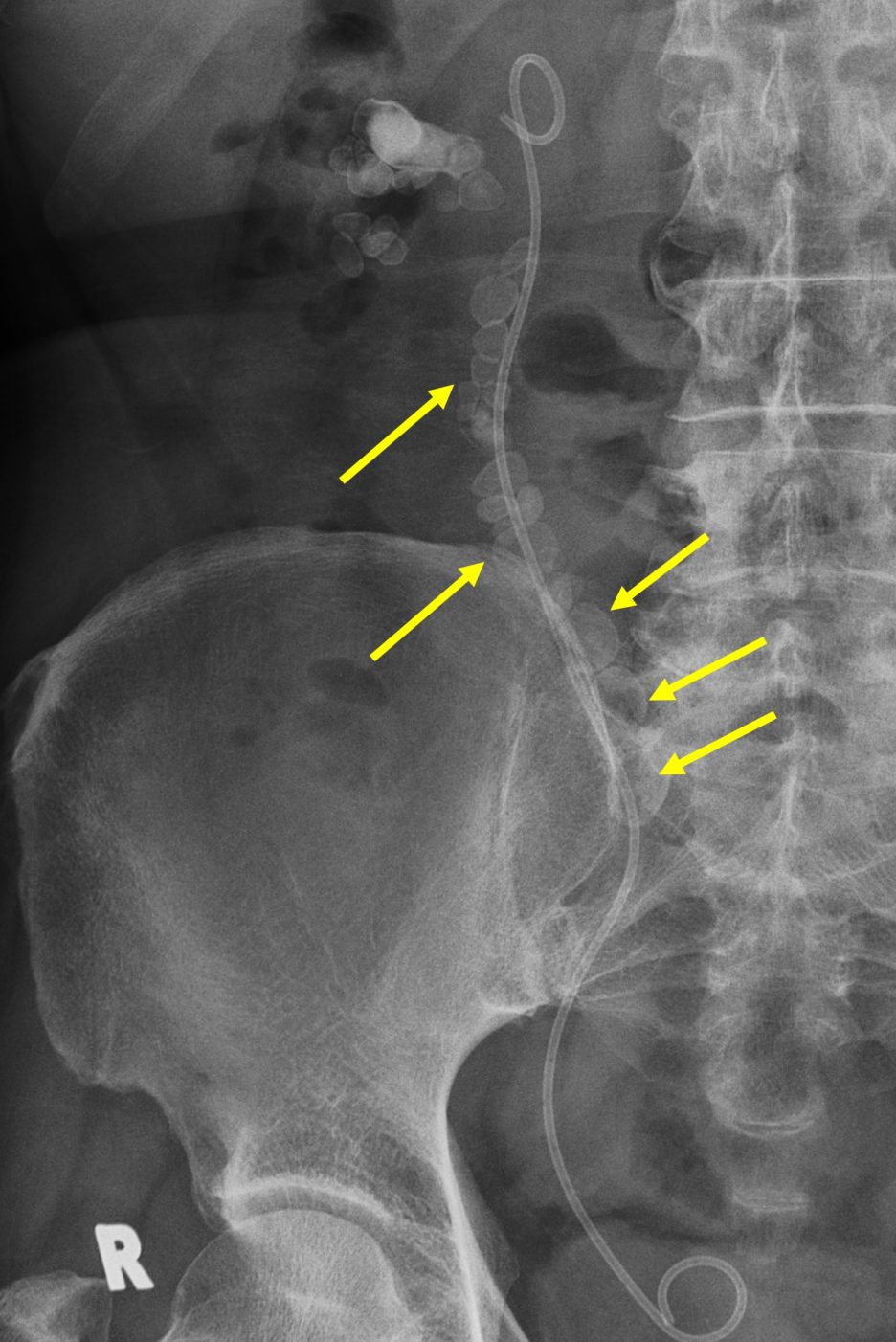Case contribution: Dr Radhiana Binti Hassan
Clinical:
- A 54-years old male, underlying DM and HPT
- History or right staghorn calculus
- Lithotripsy done a few months ago
- Right ureteric stenting done after that

KUB radiograph findings:
- Fragmented calculi at right renal pelvis
- Multiple small calculi of various sizes also noted along the right ureter (yellow arrows)
- Right ureteric stent in-situ
Diagnosis: Steinstrasse
Discussion:
- Steinstrasse literally means “stone street“ in German word.
- The term is used by German pioneers of lithotripsy to describe a possible complication of ESWL (extracorporeal shock wave lithotripsy) performed for urinary tract calculi.
- The goal of lithotripsy is to fragment stones small enough to pass spontaneously into the bladder. It may result in multiple stone fragments lining up in the ureter.
- Post-lithotripsy, the column of stones line up in the ureter producing what was once though to resemble a cobbled street
- Steinstrasse usually develops 1 day to 3 months after ESWL.
- These days refined extracorporeal shock wave lithotripsy technique has reduced the incidence of steinstrasse from 20% to 6%.
- The most common site of the column of stone fragments obstruction is the distal ureter (64%), followed by the proximal ureter (29%), and mid ureter (8%).
- Usually, the stone fragments pass spontaneously, but in about 25% of patients, retrograde stenting may be required to release the ureteral obstruction until the stone fragments become displaced and pass.
- In rare cases, more complex interventions such as stone flushing, ureteral dilatation, or long-term ureteral stenting may be required.
